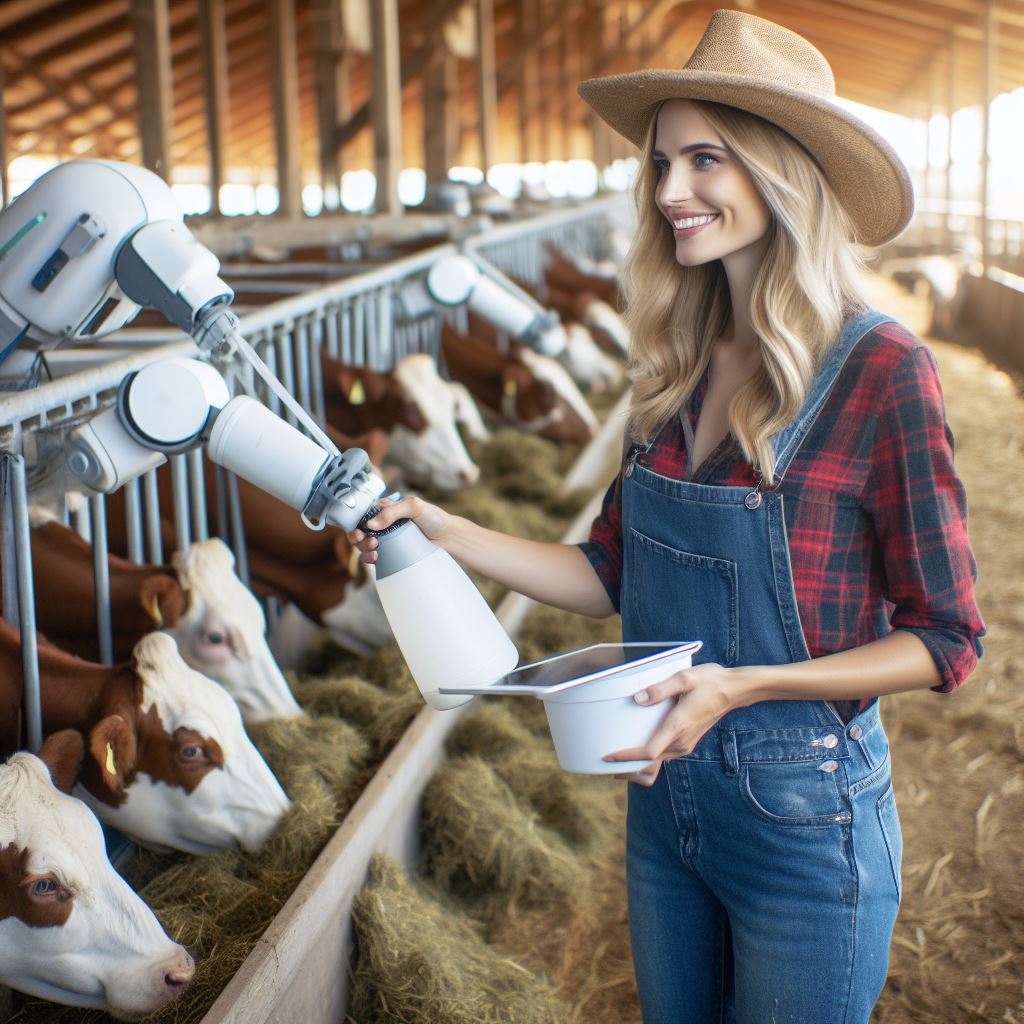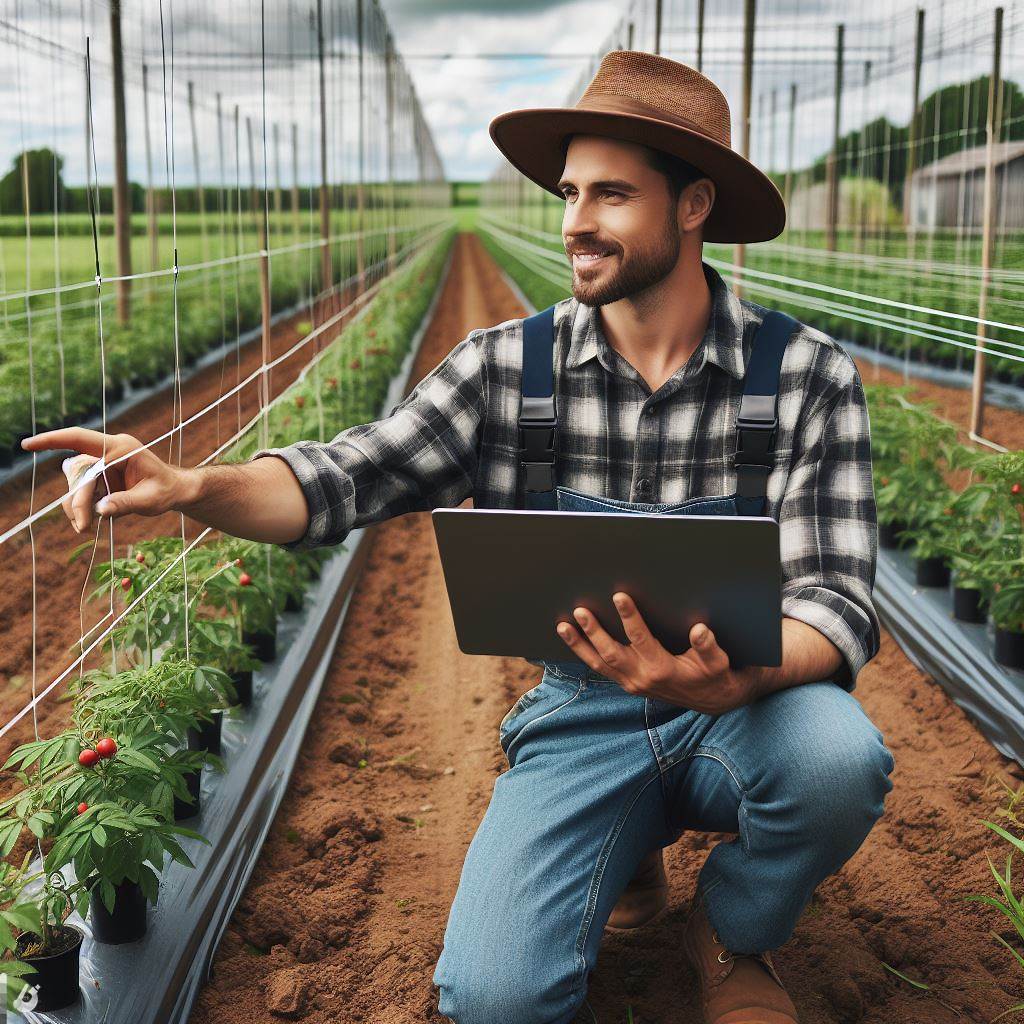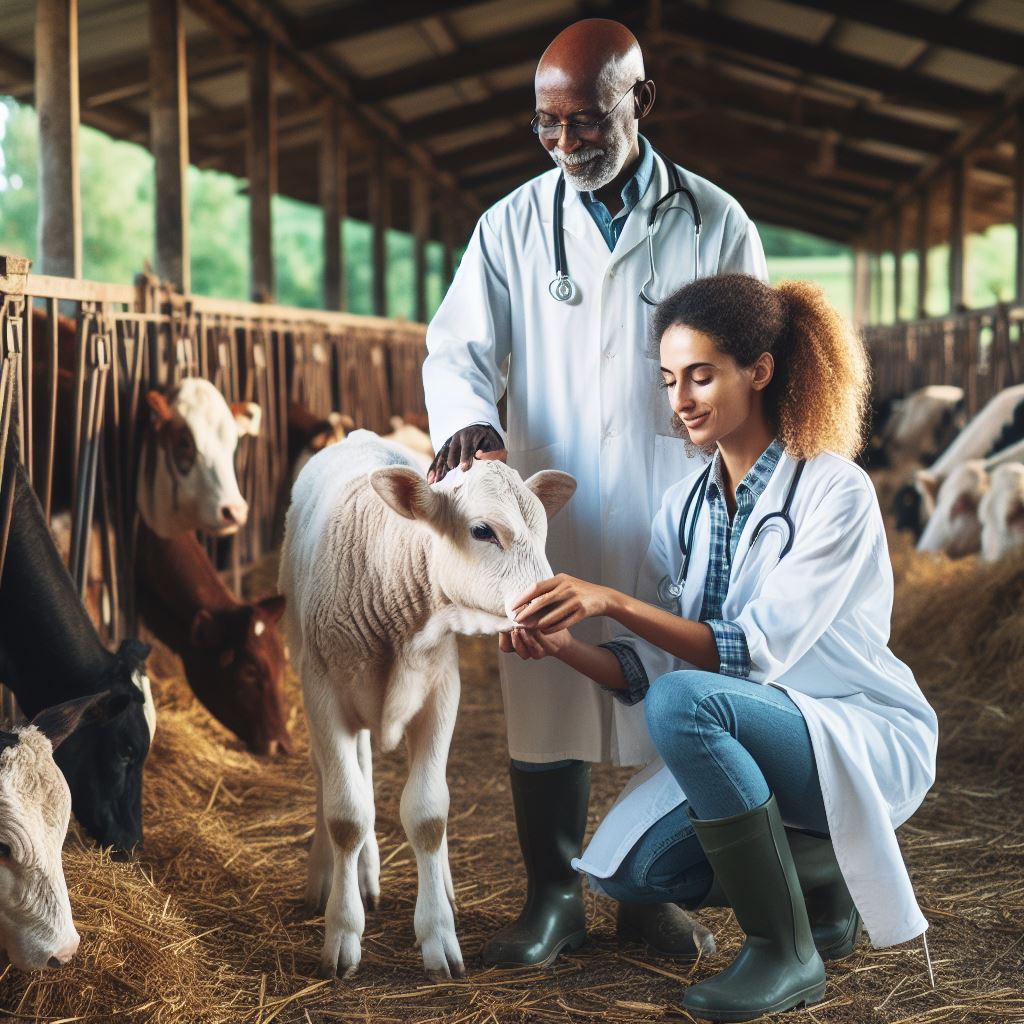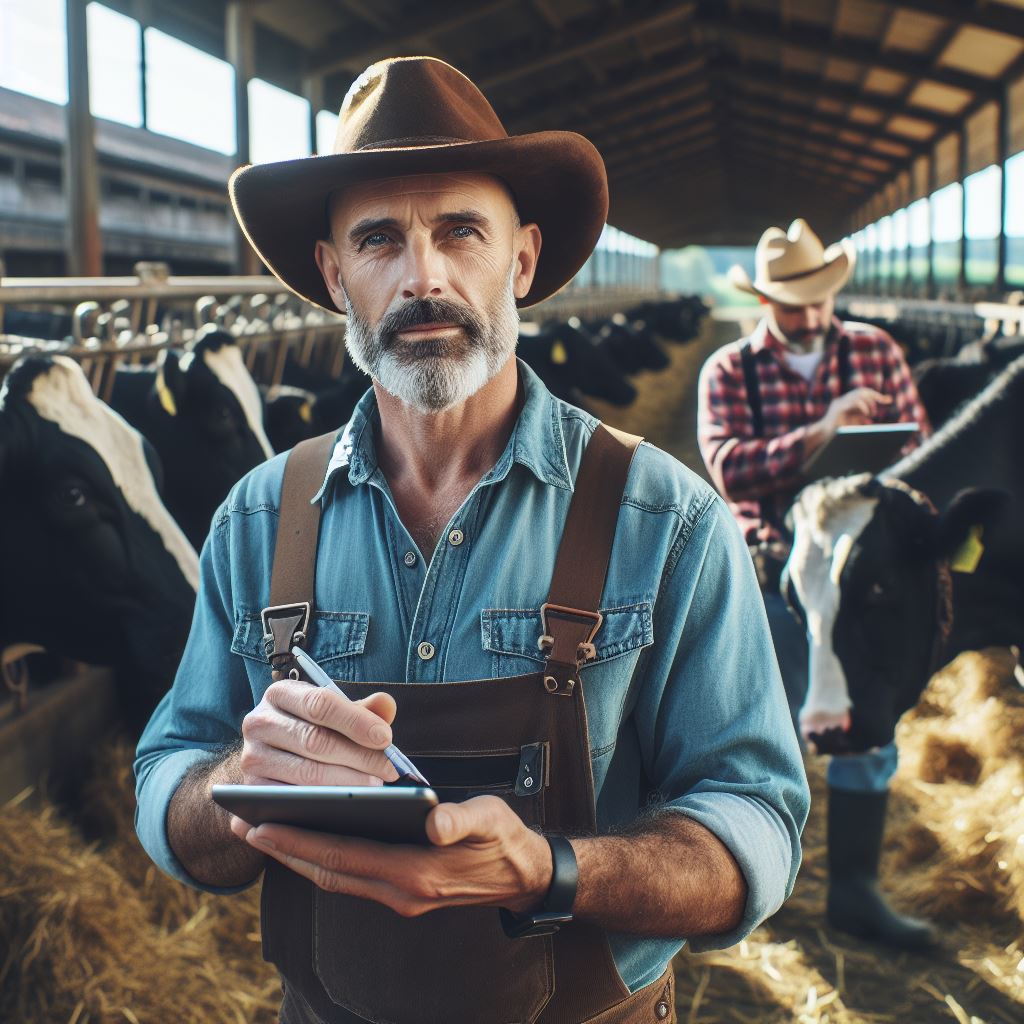Introduction
A. The Importance of IoT in Agriculture
The use of IoT in agriculture has become crucial due to its ability to increase productivity, efficiency, and sustainability in farming practices.
B. Overview of the Livestock Industry
The livestock industry plays a vital role in the global economy, providing food, employment, and economic growth.
C. Transition to IoT in Livestock Management
The integration of IoT in livestock management offers numerous benefits such as improved animal welfare, enhanced productivity, and reduced resource consumption.
Livestock farmers can now utilize various IoT technologies, including sensors, wearables, and data analytics, to monitor and manage their animals effectively.
These IoT devices enable real-time monitoring of vital parameters such as temperature, humidity, and heart rate, allowing farmers to detect early signs of diseases and promptly take necessary actions.
Additionally, IoT can automate feeding and milking processes, optimizing nutrition and ensuring animal health and productivity.
Moreover, IoT data analytics can provide valuable insights into animal behavior, helping farmers make informed decisions regarding breeding, nutrition, and overall herd management.
The transition to IoT in livestock management is gradually revolutionizing the industry, enhancing operational efficiency and sustainability while improving animal welfare.
Basically, the importance of IoT in agriculture cannot be overstated, particularly in the livestock sector.
Deploying IoT technologies enables farmers to optimize their operations, improve productivity, and ensure the well-being of their animals.
Benefits of IoT in Livestock Management
The advancements in IoT technology have revolutionized the agriculture industry, particularly in livestock management.
With the implementation of IoT, farmers and ranchers can experience a range of benefits that enhance their operational efficiency, animal welfare, and overall profitability.
A. Improved monitoring and tracking
One of the significant advantages of using IoT in livestock management is improved monitoring and tracking capabilities.
Through the utilization of IoT devices such as sensors and wearable technology, farmers can closely monitor the health and well-being of their livestock.
This real-time monitoring helps in the early detection of any health issues, enabling prompt intervention and preventing further complications.
Transform Your Agribusiness
Unlock your farm's potential with expert advice tailored to your needs. Get actionable steps that drive real results.
Get StartedIoT devices also enable behavior tracking, which plays a crucial role in livestock management.
Abnormal behavior patterns can be indicative of potential health problems or stress.
By tracking and analyzing these behaviors, farmers can take immediate action, ensuring the well-being of their animals and minimizing potential risks.
Furthermore, IoT devices facilitate location tracking, simplifying the management of livestock.
Farmers can effortlessly track the whereabouts of their animals, making it easier to retrieve them when needed and ensuring their safety.
This feature is particularly beneficial for ranchers with extensive grazing areas.
B. Enhanced feed management
In addition to monitoring and tracking, IoT technology enhances feed management practices in livestock farming.
Automated feeding systems controlled by IoT devices ensure that animals receive their feed consistently and at the right time.
This automation eliminates manual labor, reduces human error, and guarantees efficient distribution of feed across the herd.
Precision feeding is another significant advantage of IoT in livestock management.
By utilizing IoT-enabled sensors and data analysis, farmers can tailor feed portions to the specific needs of individual animals.
This personalized approach optimizes nutrition, prevents overfeeding or underfeeding, and reduces feed wastage. The result is healthier livestock and improved feed efficiency.
IoT devices also provide real-time data for feed analysis.
By collecting and analyzing data on feed consumption, farmers can effectively monitor and adjust feeding strategies as needed.
This data-driven approach enables farmers to make informed decisions about feed composition, quantities, and schedules, improving the overall feed management process.
C. Preventive healthcare measures
Moreover, IoT plays a vital role in preventive healthcare measures for livestock.
Early disease detection is crucial for minimizing the spread of illnesses and ensuring herd health.
IoT devices equipped with sensors and artificial intelligence algorithms monitor vital signs, alerting farmers to any anomalies that may indicate the presence of a disease.
This early detection allows for timely veterinary intervention and prevents further deterioration of animal health.
Additionally, remote veterinary care through IoT devices offers farmers the ability to consult with veterinarians remotely.
This capability saves time and reduces the stress on both animals and farmers.
Real-time video consultations enable immediate treatment recommendations, reducing the risk of delayed care and improving animal outcomes.
Furthermore, predictive analytics powered by IoT data allows farmers to anticipate potential health issues.
By analyzing historical and real-time data, IoT systems can identify patterns and deviations that may lead to health problems in livestock.
Showcase Your Farming Business
Publish your professional farming services profile on our blog for a one-time fee of $200 and reach a dedicated audience of farmers and agribusiness owners.
Publish Your ProfileThis predictive ability enables farmers to take proactive measures, such as adjusting nutrition or implementing specific management practices, to prevent or minimize the impact of health issues.
Generally, the benefits of IoT in livestock management are vast and significant.
From improved monitoring and tracking to enhanced feed management and preventive healthcare measures, IoT technology revolutionizes the way farmers manage and care for their livestock.
By harnessing the power of IoT, farmers can improve animal welfare, optimize operational efficiency, and ultimately achieve greater profitability in the agricultural industry.
Read: Livestock Drones: Changing Farming Dynamics
IoT Technologies for Livestock Monitoring
The integration of IoT technologies in livestock monitoring has revolutionized the agriculture industry.
Farmers now have access to a wide range of tools and devices that enable them to monitor and manage their livestock more efficiently.
A. RFID (Radio Frequency Identification)
One of the key IoT technologies used in livestock monitoring is RFID (Radio Frequency Identification).
Through tracking and identification tags, farmers can keep track of each individual animal in their herd.
This allows them to locate specific animals, monitor their movements, and identify any potential issues.
RFID tags also offer benefits in livestock management, such as improved record-keeping, efficient data collection, and increased productivity.
B. Wearable sensors
Wearable sensors are another important aspect of IoT technologies for livestock monitoring.
Health monitoring devices, attached to animals, track vital signs and provide real-time updates on their well-being.
This helps farmers to detect any health issues at an early stage, enabling timely intervention and reducing the risk of losses.
Environmental sensors, on the other hand, measure factors like temperature, humidity, air quality, and even location.
This ensures that animals are kept in optimal living conditions, minimizing stress and promoting better overall health.
Collecting and analyzing data from these wearable sensors provides valuable insights for farmers to make informed decisions regarding their livestock management practices.
C. Connected devices and networks
Connected devices and networks play a vital role in IoT-based livestock monitoring.
IoT gateways act as the interface between connected devices, such as sensors, and the cloud-based platforms utilized for data storage and analysis.
These gateways enable seamless communication and data transfer, ensuring real-time monitoring and control of vital parameters.
Through data transmission and connectivity, farmers can access information about their livestock remotely, monitor their condition, and detect any anomalies promptly.
Cloud-based platforms provide centralized storage and analysis of data collected from various devices.
This enables farmers to gain a holistic view of their livestock, identify trends, and take appropriate actions.
Cloud-based platforms also facilitate collaboration between farmers, veterinarians, and other stakeholders, fostering knowledge sharing and better decision-making.
In short, IoT technologies have emerged as a game-changer in livestock monitoring.
The implementation of RFID tags, wearable sensors, connected devices, and networks has revolutionized the way farmers manage their livestock.
These technologies provide real-time data collection, analysis, and monitoring, allowing farmers to make informed decisions and improve overall productivity and animal welfare.
With the continuous advancements in IoT, the future of agriculture looks promising, with even more innovative solutions on the horizon.
Read: Precision Livestock Farming Explained
Case Studies of IoT in Livestock Applications
A. Smart dairy farming
Smart dairy farming is revolutionizing the way farmers manage their dairy operations through IoT technology.
By using connected devices and sensors, farmers can monitor the health and well-being of their cows in real-time.
One case study that demonstrates the effectiveness of IoT in dairy farming is the use of smart collars.
These collars are equipped with sensors that monitor the cow’s body temperature, heart rate, and rumination patterns.
This data is then transmitted to a central system, which alerts the farmer if there are any deviations from normal behavior.
By having access to this real-time information, farmers can quickly identify cows that may be sick or in distress.
They can then intervene promptly, providing the necessary medical attention or adjusting their feeding and management practices accordingly.
This proactive approach not only improves the overall health and welfare of the cows but also helps increase milk production and farm profitability.
B. Connected poultry production
IoT technology is also making its mark in the poultry industry, facilitating more efficient and sustainable poultry production.
One example is the use of connected feeding systems.
Traditionally, poultry farmers manually distribute feed to their flocks.
Showcase Your Farming Business
Publish your professional farming services profile on our blog for a one-time fee of $200 and reach a dedicated audience of farmers and agribusiness owners.
Publish Your ProfileThis process can be time-consuming and labor-intensive.
However, with IoT-enabled feeding systems, farmers can automate this task.
Sensors within the feeders monitor the feed levels and dispense the necessary amount of feed based on the bird’s requirements.
This automation eliminates the risk of under or overfeeding, ensuring that the birds receive the right amount of nutrition.
Furthermore, IoT technology allows farmers to remotely monitor the feed consumption and adjust the feeding program accordingly.
This level of control not only improves the bird’s health and growth rate but also reduces feed wastage and associated costs.
C. Precision swine farming
In the swine industry, IoT technology is transforming the way farmers manage their pig farms by providing real-time insights and control over various aspects of production.
One notable application is the use of IoT-enabled temperature and humidity sensors in pig housing.
These sensors collect data on the environmental conditions inside the barn, such as temperature, humidity, and air quality.
This information is then analyzed to ensure optimal conditions for pig health and growth.
Farmers can receive real-time alerts if the temperature or humidity levels deviate from the desired range.
This allows them to take immediate action, such as adjusting ventilation or cooling systems, to maintain the ideal conditions for the pigs.
By providing a comfortable and stress-free environment, farmers can improve pig welfare and productivity.
Additionally, IoT technology enables the monitoring of individual pig behavior.
By using smart ear tags or cameras, farmers can track the activity levels, feeding patterns, and social interactions of each pig.
This information helps identify any deviations from normal behavior, indicating potential health issues or stress.
Early detection allows for timely intervention, mitigating the risk of disease outbreaks and optimizing the overall performance of the swine operation.
Essentially, the case studies mentioned above demonstrate the powerful impact of IoT in livestock applications.
From smart dairy farming to connected poultry production and precision swine farming, IoT technology is transforming the agricultural industry by providing real-time data and actionable insights for improved animal health, welfare, and productivity.
By embracing these technological advancements, farmers can optimize their operations and contribute to sustainable and efficient food production.
Read: GPS Tracking: Transforming Herd Management
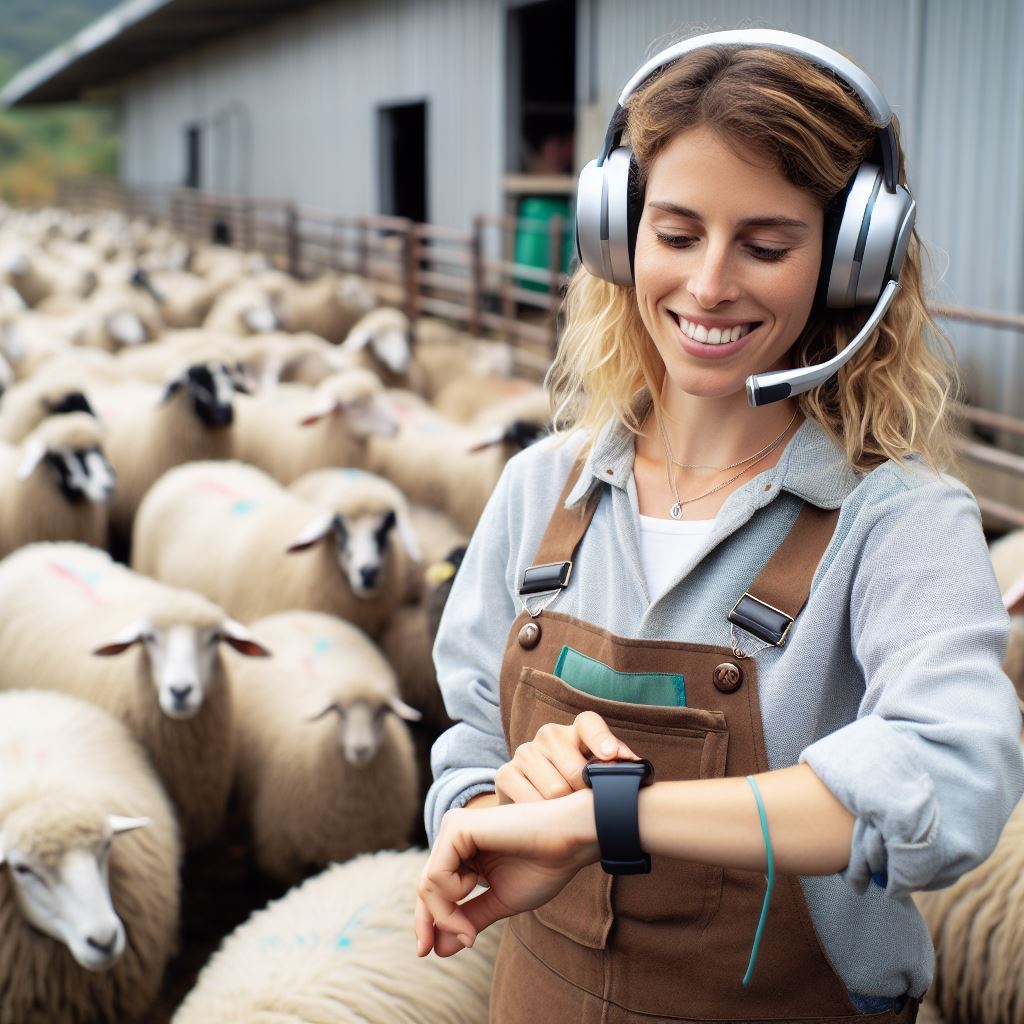
Challenges and Considerations
A. Data privacy and security
- Protecting the data collected from IoT devices is of utmost importance.
- Implementing robust security measures ensures privacy and prevents unauthorized access.
- Encryption methods can be employed to safeguard sensitive information.
- Regular security audits should be conducted to identify and rectify any vulnerabilities.
- Compliance with data protection regulations, such as GDPR, should be prioritized.
B. Connectivity issues in remote areas
- Agricultural areas often lack reliable internet connectivity, posing challenges for IoT implementation.
- Alternative connectivity options like satellite or LoRaWAN can be explored.
- Setting up local networks or mesh networks can improve connectivity in remote areas.
- Reducing reliance on constant connectivity by using edge computing can mitigate connectivity issues.
- Continuous monitoring and maintenance of connectivity infrastructure is necessary for uninterrupted operations.
C. Cost implications and return on investment
- Implementing IoT in agriculture involves considerable upfront costs for devices, sensors, and infrastructure.
- Calculating potential returns on investment and long-term cost savings is crucial.
- Evaluating the impact of IoT on productivity, resource optimization, and risk reduction helps justify the cost.
- Collaborating with industry experts and leveraging government initiatives can reduce financial burden.
- Conducting thorough cost-benefit analysis before implementation ensures sustainability and profitability.
D. Training and adoption challenges
- Familiarizing farmers with IoT technology and its benefits is essential for successful adoption.
- Providing training and educational resources on using and maintaining IoT devices is crucial.
- Addressing any language or literacy barriers can enhance farmers’ understanding and acceptance.
- Demonstrating real-world use cases and success stories can inspire confidence and promote adoption.
- Offering ongoing technical support and assistance can overcome challenges during the implementation phase.
In essence, while IoT in agriculture offers numerous benefits for livestock applications, it also presents certain challenges and considerations.
Ensuring data privacy and security, addressing connectivity issues, evaluating cost implications, and addressing training needs are vital for successful implementation.
By addressing these challenges, farmers can harness the full potential of IoT to optimize livestock management and improve overall productivity in the agricultural sector.
Read: Sensor Tech in Livestock Care: An Insight
Future Trends and Outlook
A. Integration with AI and machine learning
- The integration of IoT in agriculture with AI and machine learning is expected to revolutionize livestock applications.
- By leveraging AI, farmers can analyze data collected from IoT devices to gain valuable insights.
- AI algorithms can help in predicting diseases, optimizing feed, and monitoring animal health and behavior patterns.
- This integration also enables automated decision-making, resulting in efficient and timely actions for livestock management.
- Machine learning algorithms continuously improve and adapt based on the data they receive, leading to optimized operations.
- Farmers can utilize AI-powered systems to detect anomalies in the behavior of animals and take necessary precautions.
B. Enhanced automation and optimization
- IoT applications in livestock farming facilitate enhanced automation and optimization of various processes.
- Automated feeding systems adjust feed portions based on the individual needs of each animal.
- Sensors embedded in milking machines ensure accurate and timely milking, reducing manual labor and improving efficiency.
- Wireless monitoring systems provide real-time updates on animal health parameters, such as body temperature and heart rate.
- Optimized data-driven scheduling helps farmers manage tasks efficiently, improving productivity and resource allocation.
- Automation also enables remote monitoring, reducing the need for manual efforts and enabling farmers to focus on other essential tasks.
C. Potential for sustainable farming practices
- IoT in agriculture holds immense potential for promoting sustainable farming practices in livestock management.
- Smart sensors can monitor environmental factors such as temperature, humidity, and air quality inside livestock facilities.
- This data can be used to create an optimal environment for animals, reducing the risk of diseases and stress.
- By analyzing data collected from IoT devices, farmers can identify areas for improvement, leading to sustainable resource management.
- Efficient water and energy usage can be achieved through IoT-enabled systems, reducing environmental impact and costs.
- Integrating IoT with sustainable practices enables farmers to produce high-quality and healthy livestock products for consumers.
In a nutshell, the future of IoT in agriculture’s livestock applications looks promising, with the integration of AI and machine learning bringing transformative changes.
Enhanced automation and optimization through IoT enable efficient livestock management and improved productivity.
Furthermore, IoT holds the potential to drive sustainable farming practices by monitoring environmental factors and promoting resource management.
As technology continues to advance, the benefits of IoT in agriculture are expected to expand, creating a more efficient and sustainable livestock industry.
Uncover the Details: Futuristic Barns: Automated Feeding Systems
You Might Also Like: Robotic Tech in Agriculture: A Deep Dive
Conclusion
The benefits and applications of IoT in livestock management are substantial.
Through the use of IoT, farmers can improve their efficiency, productivity, and profitability.
IoT enables real-time monitoring, data analysis, and automation in livestock management processes.
Embracing IoT in agriculture is of paramount importance for better agricultural practices.
By utilizing IoT technologies, farmers can make informed decisions, predict and prevent diseases, and optimize resource usage.
This leads to increased sustainability and reduced environmental impact.
The potential for transformation in the livestock industry with IoT is immense.
Farmers can leverage IoT to create smart farms, where every aspect of livestock management is digitally integrated.
This integration improves animal welfare, enhances food safety, and reduces operational costs.
Showcase Your Farming Business
Publish your professional farming services profile on our blog for a one-time fee of $200 and reach a dedicated audience of farmers and agribusiness owners.
Publish Your ProfileBy embracing IoT in livestock management, farmers can unlock numerous benefits and drive innovation in the agricultural sector.
The use of IoT technology has the power to revolutionize the way livestock is managed, leading to improved productivity, sustainability, and profitability.

